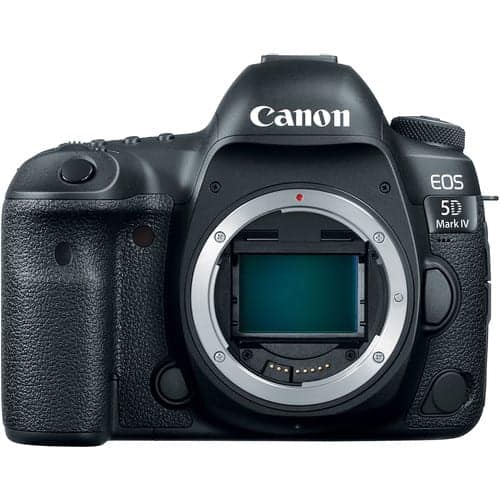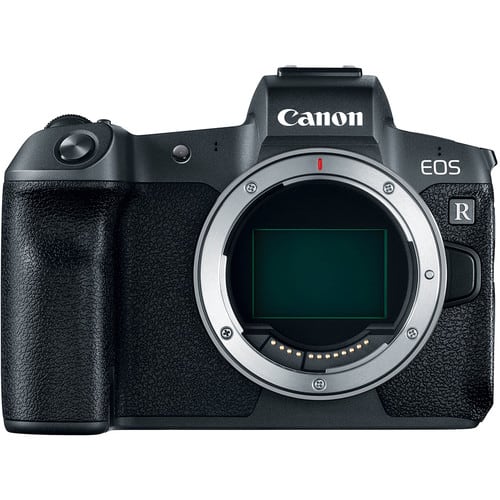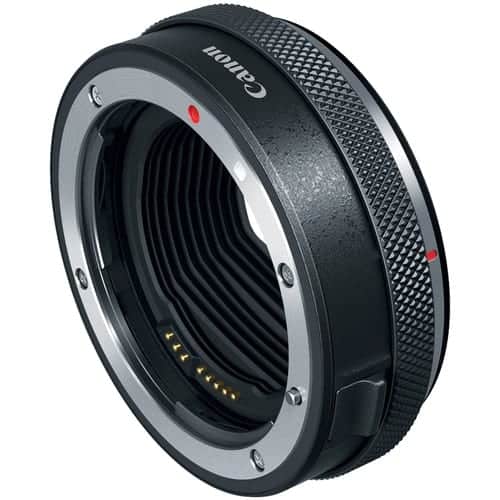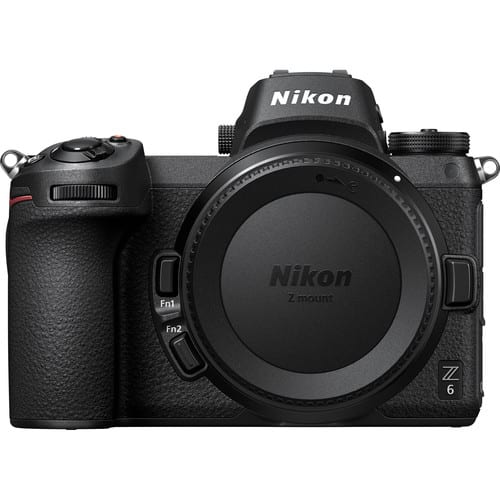- Total158
- Facebook140
- Pinterest12
- Email6
DSLR vs. Mirrorless Camera: Which One is Right for You?
What’s the best camera for you in 2020…a mirrorless or a DSLR?
You might have heard DSLRs are dead (they're not.) Or you might have heard that performance-wise, mirrorless cameras haven't caught up with DSLRs yet. (Maybe not, but they are darned close!)
I’m breaking down the pros and cons of DSLRs and mirrorless cameras in this post. That way, you can make an educated decision before you fork out your hard-earned cash on a new camera.
What Are the Differences Between DSLRs and Mirrorless Cameras?
By far, the biggest difference in these cameras is whether or not they have a mirror, because that affects their construction, how you preview your images before you press the shutter, and the price of the camera.
 DSLRs have a mirror inside the body to reflect light through the lens up to a prism and into the optical viewfinder so you can preview your shot. With the click of the shutter button, the mirror flips, cueing the shutter to open. Light then hits the image sensor, allowing the image to be captured.
DSLRs have a mirror inside the body to reflect light through the lens up to a prism and into the optical viewfinder so you can preview your shot. With the click of the shutter button, the mirror flips, cueing the shutter to open. Light then hits the image sensor, allowing the image to be captured.
The biggest disadvantage of an optical viewfinder is that you can't really tell when you've nailed your exposure. You only have your camera's light meter to set your exposure. This means you have to do some chimping to make sure you actually got the exposure nailed.
 In contrast, a mirrorless cameras doesn't have a mirror (that’s obvious, right?) That's why most mirrorless cameras have an electronic viewfinder.
In contrast, a mirrorless cameras doesn't have a mirror (that’s obvious, right?) That's why most mirrorless cameras have an electronic viewfinder.
Electronic viewfinders project a miniature display of the image captured by by your lens up though the eyepiece so that you can aim your camera correctly. Some mirrorless cameras automatically switch the display from the LCD screen to the eyepiece when they sense your eye is close to it. Other cameras switch back and forth between the eyepiece and the LCD display on the back of your camera with the push of a button.
The biggest advantage with electronic viewfinders is that you can see exactly how changing your camera settings affects the scene in camera. For example, if you change shutter speed, you'll see how your exposure changes the scene right in your camera. Unlike with a DSLR camera, you don't have to snap a photo, review it, make adjustments, and do it all over again to make sure you've got it right.
One complaint of electronic viewfinders is that sometimes the image displayed through the viewfinder is seriously overexposed compared to the LCD screen on the back of the camera. Another is that it can be really difficult to use the EVF on bright, sunny days.
Some cameras such as the Fujifilm X-Series have hybrid viewfinders that give you the option to preview your shot either in an optical viewfinder, or electronically on an LCD screen.
DSLR vs. Mirrorless: Cost
DSLRs cost more than mirrorless cameras. Assembling the mirror mechanism of a DSLR is tricky. It requires a lot of moving parts and high precision assembly systems that add expense to their production costs.
That’s also why repairs are so costly if something goes wrong with the mirror mechanism of your DSLR!
That makes mirrorless cameras easier and cheaper to produce than DSLRs, but there is a catch. Manufacturers still have huge costs for research and development they pass on to the consumer. That’s the price you pay for fancy new features.
As more people move from DSLRs to mirrorless cameras, their price will come down over time.
Winner: Mirrorless
DSLR vs. Mirrorless: Lenses & Accessories
DSLR cameras have been around for a long time. That’s why there are so many lens options for them — from cheap, to mid-range, professional, to mind-blowingly expensive.
Mirrorless camera owners have far fewer choices when it comes to lenses just made for their cameras.
Canon and Nikon have hundreds of lenses available for their DSLR cameras. Not so for their mirrorless lineups! Canon has a mere eight lenses for their mirrorless cameras, while Nikon has thirteen.
Here is the good news. Both Canon and Nikon have adaptors that allow their DSLR lenses to work seamlessly with their mirrorless cameras.
Sometimes you can find these adaptors as part of an accessories kit that comes with the purchase of a new mirrorless.
If you can’t find the adaptor as part of an accessories kit, I recommend that you purchase it separately. For less than $250, the adaptors let you use your existing lenses with a mirrorless camera. If you’ve already invested in glass you love, it’s a shame to not be able to use it!
For now, the DSLR wins this battle. But I expect the number of lenses made specifically for mirrorless cameras will increase dramatically in the near future.
Winner: DSLR
DSLR vs. Mirrorless: Size & Weight Comparison
DSLR camera bodies are larger and heavier because of their mirror and optical viewfinder mechanisms.
For instance, the Nikon D850 DSLR camera weighs in at a hefty 2.2 lbs.
Compare the weight of the D850 with Nikon's full-frame mirrorless, the Z6. The z6 weighs in at only 1.49 lbs – nearly a pound less than the D850.
That may not sound like much, but you'll feel every ounce of a camera's weight after lugging it around all day! Landscape photographers in particular appreciate lighter weight cameras when they are hiking through rough terrain. So if weight is a consideration for you, check out a mirrorless camera.
You can easily carry a mirrorless camera with ease in your coat pocket, a small purse, or carry it in a camera bag and fit in more gear – such as extra lenses, batteries, and accessories.
Winner: Mirrorless
DSLR vs. Mirrorless: Autofocus Speed
In the past, DSLRs had the advantage when it came to autofocus. DSLRs use a technology called phase detection, which measures the convergence between two beams of light to lock focus on your subject.
Early mirrorless cameras used an autofocus technology called contrast detection. Because it relies on available light, it is slower than phase detection autofocus, especially in low light situations.
Slow autofocus was the biggest complaint about mirrorless cameras until recently.
These days, mirrorless cameras have both phase-and contrast-detection autofocus sensors. There is little difference in the autofocus speed between mirrorless and DSLRs anymore.
Winner: TIE!
DSLR vs. Mirrorless: Image Quality
It’s almost impossible to distinguish between an image shot on a mirrorless camera vs. one shot on a DSLR.
Both DSLR and mirrorless cameras take high-quality pictures. In fact, you’d be hard-pressed to tell images from one camera to the other.
The two images below were shot with the same lens and camera settings. The only difference is one was shot on a DSLR, and the other was shot on a mirrorless. Can you spot the difference?


Image shot on Canon 5D Mark IV
Image shot on Canon EOS-R
In the past, mirrorless cameras had smaller image sensors than their full-frame DSLR cousins. That's because the first mirrorless cameras were limited to APS-C, or cropped sensor format.
This meant poorer image quality, because the smaller a camera's sensor is, the less light and detail it captures. But that's all changed now.
Many mirrorless cameras come with full-frame sensors now, such as the Canon EOS-R and Nikon Z6. The results are photos with amazing image quality.
Winner: Tie again!
DSLR vs. Mirrorless: Video quality
The key to video quality lies in the camera’s autofocus capability.
Mirrorless cameras use phase-detection autofocus for video, which is faster and more accurate than contrast detection.
Now it’s true that DSLRs have phase detection autofocus, too. But they can’t use it in mirror lockup mode, which is recommended whenever your camera is mounted on a tripod.
So DSLR must rely on slower contrast detection autofocus in this case.
With its faster and superior autofocus capabilities, mirrorless cameras are best for filmmakers and vloggers.
Winner: Mirrorless
Note: Both DSLR and mirrorless cameras have been shifting towards 4K, or Ultra HD, video. Ultra HD has four times the resolution of HD footage, so this is a win for videographers everywhere.
DSLR vs. Mirrorless: Bottom Line
Mirrorless cameras are lighter, more compact, and better for video. Their major drawback at the moment is the lack of choice when it comes to lenses and accessories.
DSLR owners have far more options when it comes to lenses. Many photographers prefer the DSLRs optical viewfinder to electronic viewfinders. Some even like the larger size of the DSLR because they feel it gives them a better grip.
So what’s the final verdict in the DSLR vs. mirrorless battle?
It’s really up to personal preference.
Mirrorless cameras compact design, lower cost and simple-to-use touch screen controls make them a great choice for beginners. They are also the best choice for vloggers because of their autofocus capabilities.
Experienced photographers appreciate the selection of specialty lenses available for their cameras. DSLRs have more advanced features that appeal to pros…but mirrorless cameras are catching up fast.
If you’re torn between a DSLR and a mirrorless, I suggest renting before you buy. For rentals, I recommend my friends at BorrowLenses. They have a vast selection of both DSLRs and mirrorless cameras and lenses to rent. Reserve your gear online with a small deposit. Rental terms are from 3 to 90 days.
FREE Camera Training!
Would you like some FREE camera training to make the most of your camera…whether you shoot with a DSLR or a mirrorless?
I’ve got some killer tips to help you master your camera!
Then just register here and choose your training time!
- Total158
- Facebook140
- Pinterest12
- Email6















3 thoughts on “DSLR vs. Mirrorless Cameras: A Primer”
pretty good comparison although you did not mention that with the adapter the lenses are same weight issue as with DSLR’s and lens frequently weigh more than the camera body
this can lead to some instability hand holding
but agree the mirrorless cameras can produce sterling photos
Good points, Jane. 🙂 This is something users would need to consider.
Interesting article….however you said there are only 8 lenses for Canon’s mirrorless but DSLR aficionados have dozens to pick from. That really sucks, considering that Olympus has a great selection of Mirrorless lenses, (more than 8, I can assure you). I know you are a Canon/Nike guy and that’s okay. I was a Canon lady for a number of years but got tired of breaking my back carrying my Canon gear when traveling from New York State to
Florida frequently. I bought an Olympus M4/3 camera & a couple of lenses and really liked the lighter weight, the great video quality & image quality. I sold all my Canon gear and have not been disappointed. Just sayin’……😉